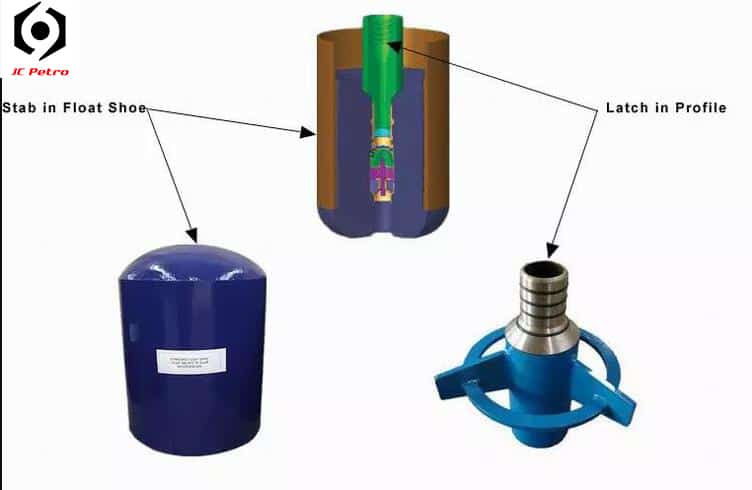The cost of a fit-out project is typically very high. How should one get going? In this post, we’ll examine the first things you should do and the questions you should ask when you begin to plan your project.

One of the largest investments any business, no matter how big, will make is in remodelling and moving. Because your workplace serves as the nerve centre for your employees and their output, it must be established properly from the start.
The question is how best to get ready for these novel difficulties. The key is in the preparation. Follow these guidelines to be ready for everything that may arise.
How Do You Plan An Office Fitout?
Planning an office fitout involves several steps to ensure that the process is well-organized and efficient. Here are some general steps to follow:
1. Define Your Goals
In general, when planning an office fitout, defining your goals involves identifying the reasons why you are undertaking the project. This could include improving the functionality of the space, creating a more comfortable and attractive work environment, accommodating growth or change within the organization, or enhancing the brand image of the company.
By defining your goals, you can establish a clear direction for the fitout project and ensure that all decisions made during the process align with those objectives.
2. Determine Your Budget
Determining your budget is an essential step in planning an office fitout. The budget will help guide decisions about the scope of the project, the materials and finishes used, and the timeline for completion. To determine your budget, consider factors such as:
- Available funds: Determine how much money you have available to allocate to the fitout project.
- Project scope: Consider the size of the space, the extent of the changes needed, and any other factors that will impact the cost of the project.
- Priorities: Identify the most important elements of the fitout project and allocate a larger portion of the budget to those areas.
- Contingency plan: Allow for unexpected expenses by including a contingency fund within the budget.
- Return on investment: Consider the long-term benefits of the fitout project, such as increased productivity or improved employee retention, when determining the budget.
By carefully assessing these factors, you can establish a budget that is realistic and aligned with the goals of the project. It’s important to be as accurate as possible in your budgeting to avoid unexpected expenses or delays during the fitout process.
3. Create A Floor Plan
Creating a floor plan is a critical step in planning an office fitout. Here are some general steps to follow:
- Measure the space: Before creating the floor plan, accurately measure the office space, including the walls, doors, windows, and any other fixed elements.
- Identify functional areas: Identify the functional areas of the office space, such as workstations, meeting rooms, break rooms, and reception areas.
- Determine the flow of traffic: Consider how employees and visitors will move through the space and plan the layout accordingly. For example, place meeting rooms and break rooms in locations that are easily accessible and don’t disrupt the flow of traffic.
- Consider lighting and acoustics: Ensure that there is sufficient lighting throughout the space, and consider the acoustic properties of the area. Choose materials that will help absorb sound and minimize noise.
- Include necessary infrastructure: Ensure that the floor plan includes all necessary infrastructure, such as electrical outlets, data ports, and HVAC systems.
- Consider ergonomics: Ensure that the workspace layout is ergonomic and accommodates employees’ needs, such as adjustable desks and chairs.
- Work with a designer or architect: Consider working with a designer or architect to create the floor plan, as they can provide valuable insight and expertise in optimizing the space.
By following these steps, you can create a floor plan that is functional, efficient, and tailored to the needs of your organization.
4. Choose Materials And Finishes
Choosing materials and finishes is an important aspect of an office fitout as it affects the aesthetic appeal, functionality, and maintenance of the space. Here are some general steps to follow:
- Consider the brand image: The materials and finishes chosen should reflect the brand image of the company. For instance, if the company is known for being modern and innovative, the fitout should reflect that through the use of sleek and contemporary finishes.
- Determine durability: The materials chosen should be durable enough to withstand wear and tear over time. This includes considering the traffic flow, usage, and expected lifespan of the materials.
- Consider maintenance: The chosen materials should be easy to clean and maintain to ensure the longevity of the fitout.
- Evaluate sustainability: The use of environmentally sustainable materials is becoming increasingly important. Choose materials that have a low environmental impact and are produced in an environmentally responsible manner.
- Choose colour and texture: The colour and texture of the materials should complement the overall design of the space and evoke the desired mood.
- Ensure safety compliance: Make sure that all materials and finishes used to comply with safety regulations and are fire-resistant, slip-resistant, and non-toxic.
By following these steps, you can choose materials and finishes that meet your organization’s needs and support the overall design of the space. It’s important to balance aesthetics with functionality to create a space that is visually appealing, durable, and easy to maintain.
5. Consider Technology Needs
When planning an office fitout, it’s important to consider the technology needs of the organization to ensure that the space is equipped to support the technology requirements of the business. Here are some general steps to follow:
- Determine technology requirements: Identify the technology needs of the organization, such as internet connectivity, data storage, hardware and software requirements, and video conferencing capabilities.
- Plan infrastructure: Plan for the necessary infrastructure, such as cabling and power outlets, required to support the technology needs of the organization.
- Evaluate security requirements: Evaluate the security requirements of the organization and ensure that the fitout provides the necessary safeguards to protect sensitive data and information.
- Consider future needs: Plan for future technology needs by ensuring that the fitout is flexible and can accommodate changes as technology evolves.
- Work with a technology consultant: Consider working with a technology consultant who can provide valuable insights and expertise in planning the technology requirements of the fitout.
By following these steps, you can ensure that the office fitout is equipped to meet the technology needs of the organization and support the overall goals of the business. A well-planned technology infrastructure can improve productivity, enhance communication, and support the growth of the organization.
6. Plan For Furniture And Equipment
Planning for furniture and equipment is an important aspect of an office fitout, as it affects the comfort, functionality, and efficiency of the workspace. Here are some general steps to follow:
- Determine the needs: Identify the furniture and equipment needs of the organization, such as workstations, chairs, tables, filing cabinets, and office equipment.
- Evaluate ergonomics: Choose furniture and equipment that is ergonomic and comfortable to use, to promote productivity and employee wellbeing.
- Consider space constraints: Ensure that the furniture and equipment were chosen to fit within the available space and do not impede traffic flow.
- Evaluate storage requirements: Ensure that the fitout includes sufficient storage space to keep the office organized and clutter-free.
- Evaluate sustainability: Choose furniture and equipment that is environmentally sustainable, such as those made from recycled materials or are energy-efficient.
- Work with a designer or architect: Consider working with a designer or architect who can provide valuable insights and expertise in optimizing the use of space and selecting appropriate furniture and equipment.
By following these steps, you can plan for furniture and equipment that meets the needs of the organization, promotes productivity and employee wellbeing, and supports the overall design of the space. It’s important to balance aesthetics with functionality to create a space that is visually appealing, comfortable, and efficient.
7. Coordinate With Contractors
Coordinating with contractors is an essential part of an office fitout project, as it ensures that the construction and installation of the fitout are completed on schedule, within budget, and to the desired quality. Here are some general steps to follow:
- Identify the required contractors: Identify the contractors required for the project, such as builders, electricians, plumbers, and painters.
- Request quotes: Request quotes from multiple contractors to compare costs, services, and expertise.
- Review contracts: Review contracts carefully to ensure that they cover all aspects of the project, including timelines, budgets, and scope of work.
- Establish communication protocols: Establish clear communication protocols with the contractors, including regular progress updates and scheduled site visits.
- Ensure safety compliance: Ensure that all contractors comply with safety regulations and adhere to safety protocols on the worksite.
- Monitor progress: Monitor the progress of the fitout closely to ensure that it is completed on time and to the desired quality.
- Address issues promptly: Address any issues or concerns that arise during the fitout promptly to avoid delays and cost overruns.
By following these steps, you can ensure that the construction and installation of the office fitout are completed smoothly and to the desired standards. Effective communication, clear contracts, and careful monitoring of progress are key to a successful fitout project.
Office Fit-Out Costs In Australia
The office fitout cost in Australia can vary widely depending on several factors, such as the size of the space, the level of customization required, and the location of the office. According to industry sources, the average cost of an office fitout in Australia ranges from $450 to $800 per square meter.
However, it’s important to note that this is only an estimate, and the actual cost of a fitout can be significantly higher or lower depending on the specific requirements of the project. Factors that can affect the cost of an office fitout include:
- Type of fitout: The type of fitout required can affect the cost, such as a basic fitout for a small business or a high-end fitout for a corporate office.
- Space layout: The complexity of the space layout, such as the number of partitions, meeting rooms, and open-plan areas, can affect the cost.
- Furniture and equipment: The type and quality of furniture and equipment required can affect the cost.
- Material and finishes: The cost of materials and finishes chosen can affect the overall cost of the fitout.
- Location: The location of the office can affect the cost of the fitout, as some areas may have higher labour or material costs.
It’s important to work with experienced professionals, such as designers, architects, and contractors, to get an accurate estimate of the cost of an office fitout. They can provide valuable insights and expertise in designing and executing the fitout within budget and to the desired quality standards.
Conclusion
An office fitout is a significant project that involves several important steps, including goal setting, budgeting, creating a floor plan, choosing materials and finishes, considering technology needs, planning for furniture and equipment, and coordinating with contractors. Each step is essential to ensure the successful completion of the fitout project.
The process of planning and executing an office fitout requires careful consideration of several factors, including the needs of the organization, the available budget, and the desired outcome. It’s important to work with experienced professionals, such as designers, architects, and contractors, to ensure that the fitout is completed within budget, on time, and to the desired quality standards.
The cost of an office fitout in Australia can vary widely depending on several factors, such as the size of the space, the level of customization required, and the location of the office. It’s essential to obtain accurate quotes from multiple contractors and work with a team of professionals to ensure that the fitout is completed to the desired standards.









